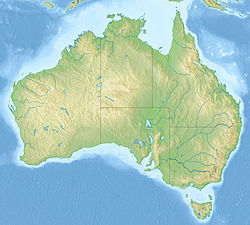| Denmark Hill Insect Bed | |
|---|---|
| Stratigraphic range: Carnian | |
| Type | Geological formation |
| Unit of | Blackstone Formation |
| Underlies | Bluff coal seam |
| Overlies | Aberdare coal seam |
| Thickness | 15 cm (5.9 in) |
| Lithology | |
| Primary | Shale |
| Location | |
| Coordinates | 27°36′S152°48′E / 27.6°S 152.8°E |
| Approximate paleocoordinates | 59°00′S105°48′E / 59.0°S 105.8°E |
| Region | Ipswich |
| Country | Australia |
| Type section | |
| Named for | Denmark Hill |
The Denmark Hill Insect Bed is a Triassic fossil locality in the Denmark Hill Conservation Park of Ipswich, Queensland, Australia. [1] [2]

